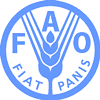 |
|||||||||
|
|||||||||||||||||||
|
|
Women in Agriculture: The Critical Food Producers 15/10/08 Over 100 contribute to new book by World Bank, FAO and IFAD Women make up over half the agriculture labour force yet they are frequently subject to discrimination, poverty and hunger.
A new publication launched today investigates the situation of women in the rural workforce and how some of the main challenges facing such women can be overcome. Launched on the occasion of International Rural Women’s Day on 15 October, the Gender in Agriculture Sourcebook reviews the complex issues that face more than 36 percent of the world’s working women employed in agriculture. Based on the work done by gender specialists from the World Bank, FAO, IFAD and international experts, the Sourcebook is intended both as a reference and a tool book for those working in agricultural development. Among the book’s findings it notes that involving women in the design and field testing of new crop varieties, machinery and tools, in Honduras, Nepal, the Philippines, Rwanda, South Africa and Zambia, speeds the adoption of innovations and increases agricultural productivity and incomes. Women have less access to resources “Compared to men, women have much less access to essential productive resources such as land, irrigation, agricultural technology and extension services, less education and training, and fewer financial resources like credit,” notes Marcella Villarreal FAO Director, Gender, Equity and Rural Employment Division. In Ghana, it is estimated that if women and men had equal rights to land, and if women had equal access to fertilizer, profits per hectare would double. In Burkina Faso, Kenya and Tanzania, for example, providing women entrepreneurs with the same inputs and education as men could increase incomes from business by as much as 20 percent. In the same countries, by allocating land, labour and capital equally to men and women, production could increase by between 10 and 20 percent. A recent FAO study found that “being a member of a female-headed household in highland Ethiopia meant having a 35 percent chance of being destitute, compared with only an 8 percent chance if one belongs to a male-headed household.” The Sourcebook aims to inspire the imagination of practitioners and to provide them with the tools needed to apply lessons learned, experiences, and innovations for designing and investing in agricultural projects that address the needs, capacities and aspirations of both women and men as well as their communities in a challenging rural environment, said Yianna Lambrou, the FAO’s project team leader. Compiled over more than two years and involving 100 contributors and reviewers, the Sourcebook brings together good practices from all the regions and innovative activities that successfully, integrated gender issues into projects and programmes. It synthesizes experience gained and the tools needed for practitioners to assist rural women and men. It also provides an up-to-date understanding of gender issues in themes of cross-cutting importance for agriculture and rural development such as agricultural markets, climate change and bionergy, rural finance, land policy and administration, natural resource management, fisheries and aquaculture, livestock and forestry.
|
||||||||||||||||||

|
|
||||||||||||||||||
| home | agri-services | pedigree
pen | news | dairy | beef | machinery property | organisations | site map |
|||||||||||||||||||

